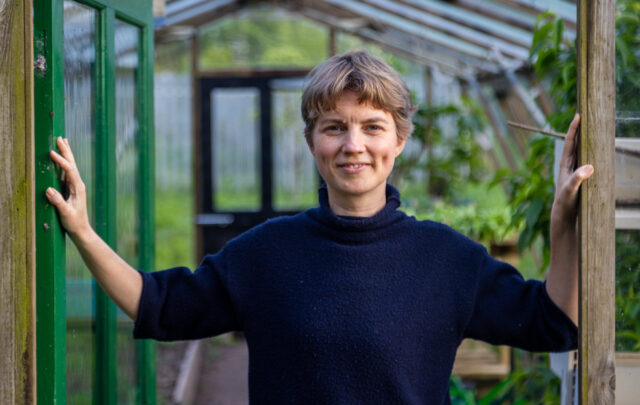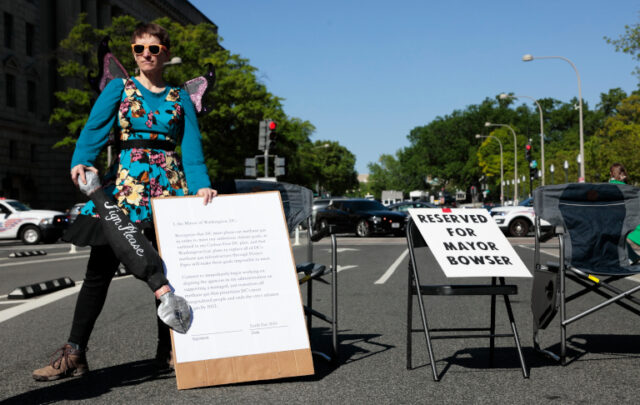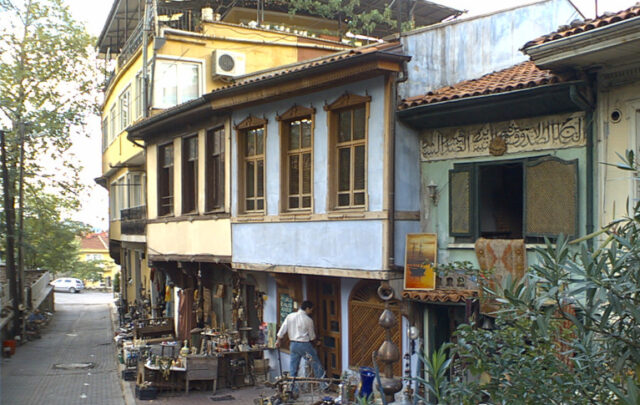NOTE: Images in this archived article have been removed.

Low aerial view of Selden Point Bar, one of the restoration sites on the Rio Grande floodplain in New Mexico.
With rivers in the American Southwest dammed, diverted, drought-stricken and running dry, their fate is increasingly in human hands.
Now, in the southern portion of the Rio Grande in New Mexico, a unique partnership of irrigators, government agencies and conservationists is returning some water to the river’s floodplain – and to the native trees, songbirds, pollinating bees, butterflies, beavers and other wildlife that historically called this ecosystem home.
This week, near the city of Las Cruces, water once slated for crop irrigation was directed instead – by virtue of a voluntary sale of water rights – to young cottonwoods and willows planted at one of 30 sites planned for habitat restoration along the river.
A first-of-its-kind program in New Mexico, it “allows both agriculture and native riparian habitat to thrive side by side with no impact to United States and Mexican water rights holders,” said Edward Drusina, Commissioner of the
U.S. section of the International Boundary and Water Commission (USIBWC), in a press release. (The USIBWC is the federal agency charged with applying the boundary and water treaties between the United States and Mexico, including the agreement on the Rio Grande.)
The idea is to repair some of the ecological harm done from the
Rio Grande Canalization Project, which was constructed seven decades ago to control floods along a 105-mile (170-kilometer) stretch of river from Caballo, New Mexico, to El Paso, Texas.
That project essentially confined the river channel within a floodway bounded by levees, thereby disconnecting the river from its natural floodplain. Lacking the overbank flows needed to keep it healthy, the rich mosaic of floodplain habitats – including forest, woodland, meadow and grassland – began to degrade.
The disappearance of these native trees and shrubs in turn threatened the birds and wildlife that depend on them for shelter and sustenance, including the
southwestern willow flycatcher(Empidonax traillii extimus), which forages for insects around dense riparian vegetation. The bird was added to the federal endangered species list in 1995.

Young cottonwoods and willows get their first deep drink of irrigation water at a restoration site along the Rio Grande near Las Cruces, New Mexico. Photo by Ken Stinnett.
To restore these habitats, though, takes water. And with no spare water rights to be had along the southern Rio Grande, government officials, conservationists and irrigators had to get creative. And so they did.
The solution was an innovative water trading mechanism that facilitates the voluntary transfer of irrigation water from farmlands to floodplains.
Working in partnership with the U.S. Fish and Wildlife Service, National Fish and Wildlife Foundation, New Mexico Audubon, and the Elephant Butte Irrigation District, the USIBWC established the Environmental Water Transactions Program, which acquires water rights from willing sellers to restore riparian habitats along the river.
“There was not a lot of experience with this kind of thing here in New Mexico,” said Beth Bardwell, director of freshwater conservation with
Audubon New Mexico. Bardwell was instrumental in bringing the program to fruition and plays an active role in its implementation.
A couple of unconventional steps were needed to make the idea work.
First, newly planted cottonwoods and other floodplain vegetation had to be categorized as agricultural crops, so that under U.S. reclamation law they could receive federal irrigation water. And second, the
Elephant Butte Irrigation District (EBID) had to allow the restoration sites to receive irrigation water, which the district’s board unanimously agreed to do.
Calling the program “a locally crafted solution,” EBID manager Gary Esslinger said in the release that it “protects farmers while helping to restore a healthier, more natural river corridor.”
On Monday morning, June 30, EBID engineers released water for the first time to the young cottonwoods and willows recently planted at the inauspiciously named Leasburg Extension Lateral Wasteway #8 restoration site. Observers got a preview of things to come, since the USIBWC is committed to restoring native trees, shrubs and grasslands on a total of some 2,500 acres along the southern Rio Grande.
With water so tight in this part of the country, success depended on a remarkable degree of cooperation among an unlikely group of partners.
Over time, the irrigators came to see the conservationists as partners looking for a win-win, rather than as enemies out to take their water who cared more about endangered species than local farmers.
One decision that built that trust, Bardwell told me, was to collectively support exclusion from a
critical habitat designation under the federal Endangered Species Act. Such a designation could give the conservationists an upper hand – for example, by possibly allowing the restoration sites to get proportionately more water than farmers do during droughts.
Instead, all parties share the pain of water shortages equally.
“We all live in the same place,” Bardwell said. “It’s far more important that we’re able to talk to one another than to force a solution that generates a lot of enmity among neighbors.”
This Rio Grande habitat restoration effort is one more example of how smart water management can restore freshwater ecosystems – and of the power of cooperation in meeting our tough water challenges.
 Partners gathered to celebrate the release of water to the new restoration site, including (3rd to 5th from the left) Beth Bardwell, Director of Freshwater Conservation at Audubon New Mexico; Gary Esslinger, Manager of the Elephant Butte Irrigation District; and Edward Drusina, Commissioner of the U.S. Section of the International Boundary and Water Commission. Also present were Congressional staff from the offices of Congressmen Steve Pearce and Martin Heinrich and Senator Tom Udall. Photo by Ken Stinnett.
Partners gathered to celebrate the release of water to the new restoration site, including (3rd to 5th from the left) Beth Bardwell, Director of Freshwater Conservation at Audubon New Mexico; Gary Esslinger, Manager of the Elephant Butte Irrigation District; and Edward Drusina, Commissioner of the U.S. Section of the International Boundary and Water Commission. Also present were Congressional staff from the offices of Congressmen Steve Pearce and Martin Heinrich and Senator Tom Udall. Photo by Ken Stinnett.


 Partners gathered to celebrate the release of water to the new restoration site, including (3rd to 5th from the left) Beth Bardwell, Director of Freshwater Conservation at Audubon New Mexico; Gary Esslinger, Manager of the Elephant Butte Irrigation District; and Edward Drusina, Commissioner of the U.S. Section of the International Boundary and Water Commission. Also present were Congressional staff from the offices of Congressmen Steve Pearce and Martin Heinrich and Senator Tom Udall. Photo by Ken Stinnett.
Partners gathered to celebrate the release of water to the new restoration site, including (3rd to 5th from the left) Beth Bardwell, Director of Freshwater Conservation at Audubon New Mexico; Gary Esslinger, Manager of the Elephant Butte Irrigation District; and Edward Drusina, Commissioner of the U.S. Section of the International Boundary and Water Commission. Also present were Congressional staff from the offices of Congressmen Steve Pearce and Martin Heinrich and Senator Tom Udall. Photo by Ken Stinnett.





